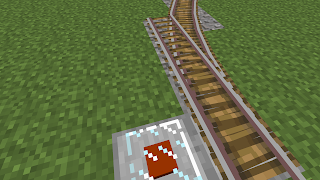

The turntable bridge (the part of the turntable that included the tracks and that swivelled to turn the equipment) could span from 6 to 120 feet (1.8 to 36.6 m), depending on the railway's needs. Rotation of the bridge could be accomplished manually (either by brute force or with a windlass system), popularly called an "Armstrong" turntable, by an external power source, or by the braking system of the locomotive itself, though this required a locomotive to be on the table for it to be rotated. The turntables had a positive locking mechanism to prevent undesired rotation and to align the bridge rails with the exit track. This was most often achieved by a steel rail running around the floor of the pit that supported the ends of the bridge when a locomotive entered or exited. The bridge was typically supported and balanced by the central pivot, to reduce the total load on the pivot and to allow easy turning. Like earlier turnplates, most new turntables consisted of a circular pit in which a steel bridge rotated.

#Switching rails minecraft upgrade
The resulting need to turn heavy locomotives required an engineering upgrade to the existing turnplate technology. The railway switch, which overcame both of these problems, was patented by Charles Fox in 1832.Īs steam locomotives replaced horses as the preferred means of power, they became optimised to run in only one direction for operational ease and to provide some weather protection. Second, their switching capacity could only be accessed when the wagon was on top of them and still, which limited the total capacity of any wagonway.

First, they were relatively small (often no more than 1 yard (0.91 m) in length), which limited the wagon length that could be turned. However, the problems with turnplates and sliding rails were twofold. When iron and later steel replaced stone and wood, weight capacity rose again. Thus, wagon weight was limited only by the strength of the wood used in the turnplates or sliding rails. Loaded wagons could be moved onto the turnplate, and rotating the turnplate 90 degrees allowed the loaded wagon to be moved to another piece of wagonway. Their diameter matched that of the wagons used on any given wagonway, and they swung around a central pivot. Turnplates were initially made of two or four pieces of wood, circular in form, that replicated the track running through them. The first railway switches were in fact wagon turnplates or sliding rails. The lack of switching technology seriously limited the weight of any loaded wagon combination. These early wagonways used a single point-to-point track, and when operators had to move a truck to another wagonway, they did so by hand. Turnplates at the Park Lane goods station of the Liverpool and Manchester Railway in 1831Įarly wagonways were industrial railways for transporting goods-initially bulky and heavy items, particularly mined stone, ores and coal-from one point to another, most often to a dockside to be loaded onto ships. Turntables were also used to turn observation cars so that their windowed lounge ends faced toward the rear of the train. When operated as part of a multiple unit locomotive consist, the locomotives can be arranged so that the consist can be operated "front end first" no matter which direction the consist is pointed. When a diesel locomotive is operated as a single unit, the railway company often prefers, or requires, that it be run "front end" first. In the case of diesel locomotives, though most can be operated in either direction, they are treated as having "front ends" and "rear ends" (often determined by reference to the location of the crew cab). In the case of steam locomotives, railways needed a way to turn the locomotives around for return trips as their controls were often not configured for extended periods of running in reverse and in many locomotives the top speed was lower in reverse motion. it is especially used in areas where economic considerations or a lack of sufficient space have served to weigh against the construction of a turnaround wye. In rail terminology, a railway turntable or wheelhouse is a device for turning railway rolling stock, usually locomotives, so that they can be moved back in the direction from which they came.


 0 kommentar(er)
0 kommentar(er)
